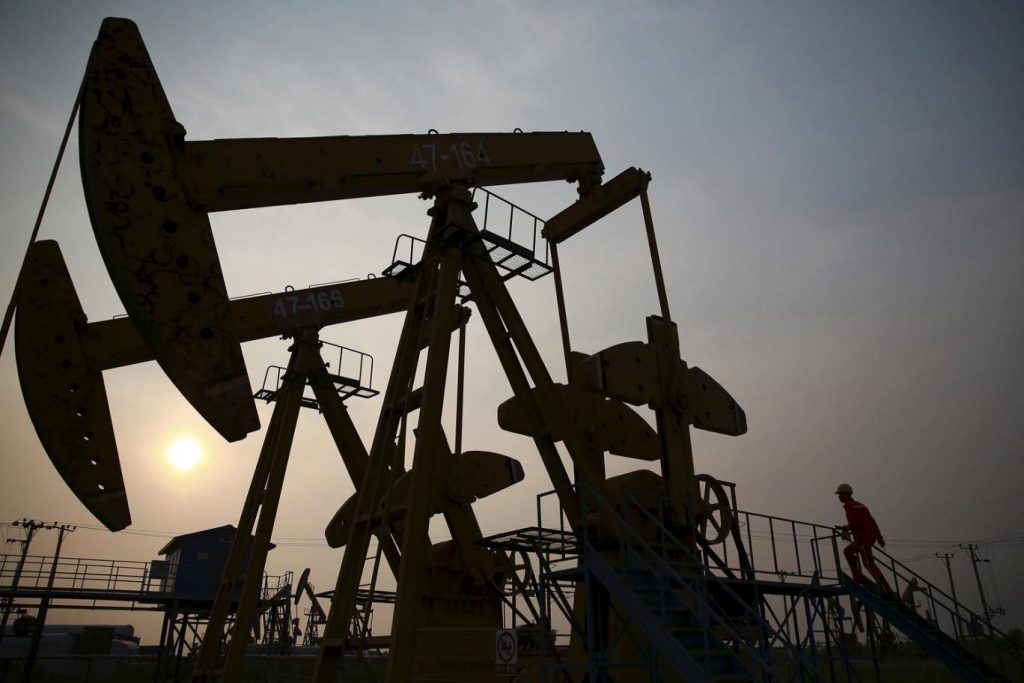Crude oil prices retained gains in Asia on Wednesday as China’s first quarter GDP met expectations even as other data from China on retail sales, industrial output, fixed asset investment fell below levels seen, though support from stepped-up fighting in Yemen and mixed industry data on U.S. supplies rounded the near-term picture to the upside.
The American Petroleum Institute said Tuesday that U.S. crude stockpiles last week rose by 2.6 million barrels, while distillate supplies eased 566,000 barrels and gasoline inventories fell 4.1 million barrels.
Energy traders await the release of the EIA weekly storage report on Wednesday. Last week, crude futures fell sharply after inventory levels increased by 10.95 million barrels for the week that ended April 3, representing the highest weekly buildup in more than 13 years.
The massive surge pushed U.S. storage to 482.4 million barrels, its highest level in more than 80 years.
China’s first quarter GDP rose 7.0% year-on-year, matching expectations, while industrial output gained 5.6%, below the 6.9% seen and retail sales increased 10.2%, lower than 10.9% expected and fixed assets investment gained 13.5%, less than the 13.8% seen.
The figures follow disappointing Chinese trade data on Monday. Last month, exports in China declined by 15% on a year-over-year basis, one month after rising by nearly 50%. Chinese imports for March also fell by 12.7%, after declining by 20.5% in February.
On the New York Mercantile Exchange, WTI crude for May delivery rose 0.47% to $53.54 a barrel.
Overnight, crude oil futures surged on Tuesday to move into positive territory for the year, amid continuing unrest in Yemen and mixed long-term forecasts on demand and production.
On the Intercontinental Exchange (ICE), Brent crude for June delivery rose above $60 a barrel in U.S. afternoon trading before falling slightly back to settle at $59.92 (up 0.88 or 17. The spread between international and the U.S. domestic benchmarks for crude decreased to $6.52 from $7.64 on Monday.
Crude futures received a boost as fighting escalated between Iranian-backed, Shiite-led Houthi rebels and Sunni-led Saudi Arabian troops. Saudi warplanes destroyed a military academy and a football stadium located in Yemen’s Southwestern province of Dhamar, officials confirmed on Tuesday. The venues reportedly were being used by the Houthi rebels to store weapons, according to the Saudi military.
Yemen is strategically located on the Bab el-Mandeb strait, one of the world’s largest chokepoints for oil. A closure of the narrow entrance could limit outflows into the Gulf of Aden. Energy traders are sensitive to risky geopolitical news involving Saudi Arabia.
Prices remained relatively unchanged after the Energy Information Administration (EIA) released its annual energy outlook for 2015 on Tuesday. The EIA estimates that brent will average $56 a barrel for the remainder of the year before increasing to $76 a barrel in 2018. The report predicts a slower increase in prices over the next two years in comparison with current oil futures.
By 2020, the EIA estimates that production will rise to 10.6 million barrels per day, up from its current level at approximately 9 million
